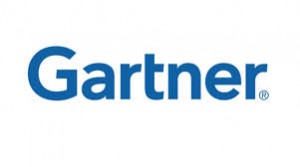 Engaged customers are usually better advocates of the brand and are more loyal and more profitable, according to research by Gartner, Inc. Gartner has identified four underlying attributes that can help customer relationship management (CRM) leaders to improve their level of customer engagement.
Engaged customers are usually better advocates of the brand and are more loyal and more profitable, according to research by Gartner, Inc. Gartner has identified four underlying attributes that can help customer relationship management (CRM) leaders to improve their level of customer engagement.
“All organizations in the private and public sector connect with customers, most often through the work of the marketing, sales and customer service departments,” said Michael Maoz, vice president and distinguished analyst at Gartner. “However, in most cases, these organizations are not actually engaging with the customer, and instead they have been disengaging for a decade in order to lower costs. Furthermore, relatively few have an enterprisewide approach to engaging with customers.”
Customer engagement needs to be rooted in a wider cross-enterprise reconsideration of engagement, involving how employees, partners and customers engage. Measuring the level of engagement itself is complex and requires examining the active, emotional, rational and ethical attributes that determine the organization’s brand/values.
Increase Active Customer Engagement Through Social, Mobile and Traditional Channel Alignment
Being active requires activity, yet many organizations have been attempting to reduce the activity required to engage with customers to lower their costs. An actively engaged customer is more willing to participate with the organization through multiple different channels, ranging from online self-service tools or a mobile application to community participation or user group involvement. They are more willing to provide feedback when asked, make best use of the products or services on offer, and make suggestions on how to improve them. From the organization’s perspective, active engagement requires changes to people, process and technology.
Processes can be modified to make them more flexible, timely, reliable, thorough, accessible and personal, while technology can be introduced to encourage participation in such forums as ideation platforms, peer-to-peer support communities and better user experiences. Each is important to improve active customer engagement.
Build Emotional Customer Engagement Through Transparency and Trust
Emotional engagement is built up from multiple factors and is often a more powerful influence than rational/physical elements in how a customer engages with an organization. The emotions associated with owning a product or using a service and with the interactions customers have with the organization are of key importance. However, recognizing an emotion and measuring and modifying an emotion in a systematic manner are extremely difficult.
Customer satisfaction surveys have been used for decades in an attempt to detect and quantify emotions related to happiness and unhappiness. It is clear that those customers who are emotionally engaged are more likely to complain less, compliment more, buy more and contribute more than those who are not.
Another key factor is how organizations use, or more likely misuse, customer data. By respecting customers’ privacy rather than bombarding them with semi-personalized campaigns, organizations can elevate trust and engagement. Allowing customers to access the personal data held and giving them the ability to set controls on what data can be used puts them in a position of control and makes them more at ease with their provider.
Target Rational Customer Engagement Through Greater Customer Participation and Knowledge Availability
Rational customer engagement is the involvement of a customer in accumulating lessons on a product or service and conducting additional fact-finding and research. The customer will decide what level of further relationship investment is warranted based on this research or general knowledge of the product or service and will then develop an appropriate depth and understanding of the product or service and the vendor. Their level of engagement will therefore be linked to rational elements associated with the product or service such as value, quality, detail and innovation. This elevated level of knowledge may then manifest itself in additional activities such as participation in a self-service community or engaging in co-creation or a customer panel.
Gain Ethical Customer Engagement Through Demonstrated Commitment to Fairness With Employees, Partners, Customers and Community
Ethical engagement explores the deepest values and meanings by which people live. These aspects of life and human experience go beyond a purely materialistic view of the world. The organization has a published framework that discusses how it views its responsibilities to employees, partners, customers, suppliers, the community and the world.
In the past, ethical engagement has been somewhat optional. If you are not ethical in your actions but you don’t get caught, then no harm would have been done. The problem now is that with two billion Facebook users and seven billion mobile phone users across the world, organizations can no longer hide their ethical misdemeanors. In tandem, society as a whole is becoming more ethically aware and supportive of ethical principles and standards. Ethical engagement is, therefore, a growing consideration within many industries.








